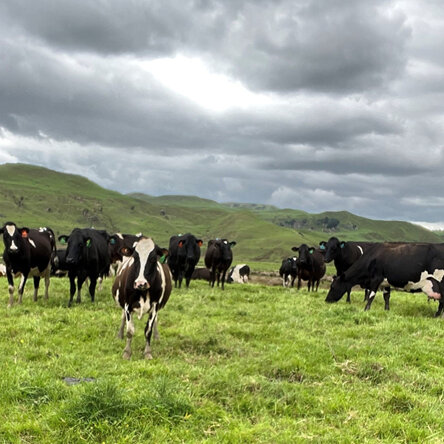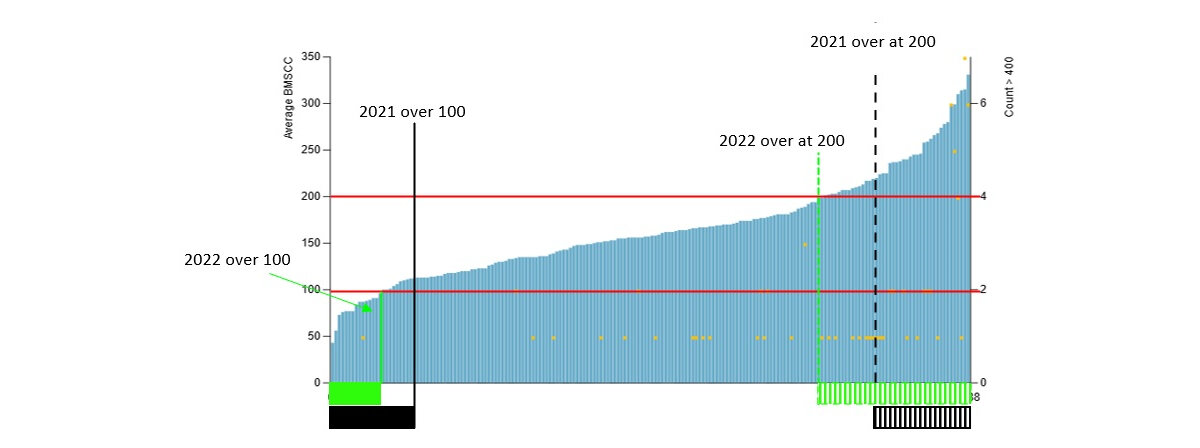This is a graph of the average BTSCC for the early part of the 2022-2023 season. Each blue bar on this graph represents the BTSCC of a farm in the Franklin Vets group.
The black lines on this chart represent the results from last season, the solid line represents 100,000 cells and the broken line 200,000 cells. The green lines are for the same values this season. A corresponding box has been drawn where each line hits the bottom of the graph to show the number of farms above/below these points.
On the left-hand side of the graph, there are fewer farms under 100,000 at this stage this season (green box) compared to last season (black box). On the right-hand side you can see a higher number over 200,000 (green dashed box) vs last season (black dashed box). I can also confirm that within the middle section there is a shift towards more farms being higher than previously too.
Possible driving forces behind what we are seeing (higher BTSCC and Mastitis rates):
- A lot of farms were tight on cover coming into this season, this had a few benefits and disadvantages.
- Increased risk of mastitis due to the environmental challenge (Cows offered less area, stood off more, fed out in dedicated areas).
Reduce the rate of infection by:
- Teatspray (plus an emollient)
- Use the highest recommended concentration and make sure you’re getting good coverage
- Make it up with clean water and only make up enough for 3 days at a time.
- Check pulsators are working correctly and the vacuum is set at the correct level for the plant
- This is not the season to push liners beyond recommended changing intervals (every 2500 milkings or 5 months, whichever comes first)
- Avoiding overmilking (will become more of an issue as we move through the season).
Identify risk factors and problems
- Herd tests:
- Don’t just get the top 10 cows and blanket treat them or send them down the road (life is unfortunately not that simple)
- Identify problem cows early (isolate them in a penicillin herd so they can’t infect the rest of the herd) – your vet can help you with this
- Take samples, put in your freezer and run if getting high rates or poor response to treatment.
What we can do
- Milk Cultures (on farm and in clinic) will help identify where the infections are coming from and the best treatment to use
- Herd testing, we can run a report on the data from your first herd test which will give us a list of problem cows along with a report highlighting problem areas and risks.
- If you are struggling to keep your BTSCC under control we have Fonterra accredited milk quality consultants who can perform a milk quality visit. These visits help identify issues on your farm and get your cell count to a manageable level.
- If you have graded, then you can access the demerit relief program (speak with your Fonterra rep), this allows you to spend your demerits on services that will help you return to supply.
It’s clear that for most we have started the season with a much higher BTSCC than we would like. If left unchecked this could result in higher BTSCC through the season, meaning lost opportunities to move to once-a-day milking, increased mastitis treatments or having to dry off animals early.
If you are struggling with any of these issues please pick up the phone and give us a call, we can help work through issues over the phone and make a plan of how we tackle these types of problems to manage the impact on your business.
Dr David Moors - Farm Vet at Te Kauwhata.





